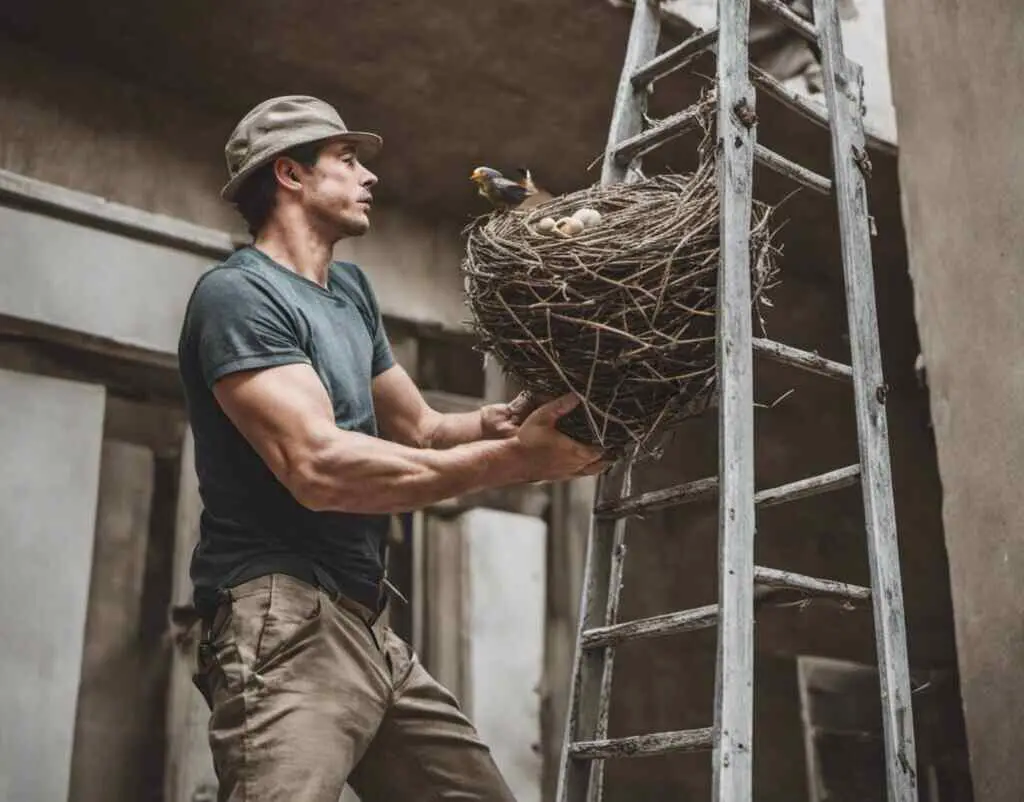Have you ever been tempted to touch a bird’s nest out of curiosity? While it may seem harmless, disturbing a bird’s nest can have serious consequences for both the birds and yourself.
In this article, we will explore the potential harm of touching a bird’s nest, the importance of leaving them undisturbed, and the legal protections in place for bird nests.
Table of Contents
- 1 Key Takeaways:
- 2 What Happens If You Touch A Birds Nest?
- 3 Understanding the Importance of Birds Nests
- 4 Nesting Behavior and Protection Instincts of Birds
- 5 Potential Harm to Birds
- 6 Legal Protection of Bird Nests
- 7 Risks for Humans
- 8 How to Protect Wildlife
- 9 Teaching Children about Birds Nests
- 10 Positive Actions for Bird Conservation
- 11 Conclusion
- 12 FAQs: What Happens If You Touch A Birds Nest?
- 12.1 What are the potential consequences of touching a bird’s nest?
- 12.2 Why should I avoid touching a bird’s nest?
- 12.3 What can happen if I disturb a bird’s nest?
- 12.4 What are the potential risks associated with touching a bird’s nest?
- 12.5 How are bird nests legally protected?
- 12.6 What are the risks for humans if they touch a bird’s nest?
- 12.7 How can I protect wildlife, including bird nests?
- 12.8 Why is it important to teach children about bird nests?
- 12.9 What positive actions can I take for bird conservation?
- 12.10 What is the importance of respecting bird nests?
- 13 Author
Key Takeaways:
- Touching a bird’s nest can cause harm to the birds and potentially lead to their abandonment of the nest.
- Bird nests are important for the survival of bird populations and should be respected.
- Disturbing a bird’s nest is illegal and can result in fines or legal consequences.
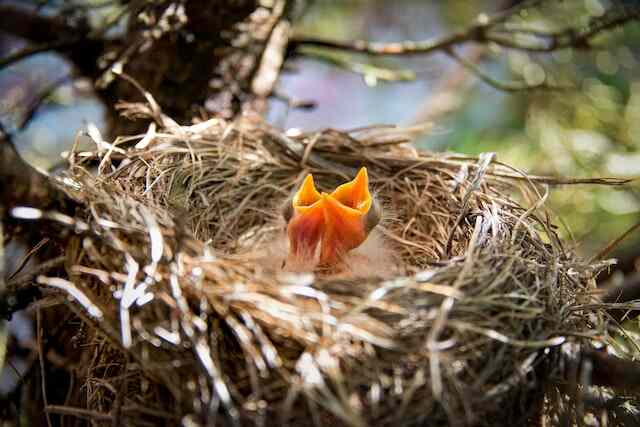
What Happens If You Touch A Birds Nest?
If you touch a bird’s nest, it’s unlikely to cause any harm to the eggs or chicks inside. Most birds have a poor sense of smell and won’t abandon their nest just because it has been touched by a human.
However, it’s still important to avoid touching or disturbing bird nests whenever possible, as it can cause unnecessary stress for the birds and may make them more vulnerable to predators.
If you do need to move a nest for safety reasons, it’s best to do so when the nest is empty, or to consult with a wildlife expert for guidance.
Understanding the Importance of Birds Nests
Birds nests are important structures that play a crucial role in the life cycle of birds. They provide a safe and secure environment for birds to lay their eggs and raise their young. Nest building is also a critical behavior that allows birds to form pair bonds and establish territories.
By building nests, birds are also contributing to the ecosystem by providing homes for other wildlife such as insects and small mammals. In addition, the materials used to construct nests, such as twigs and leaves, can be reused by other birds or decompose and enrich the soil.
Nesting Behavior and Protection Instincts of Birds
Birds are instinctive creatures, and they have a strong protective nature over their nests. Nesting is an essential part of a bird’s life cycle, and it is crucial to allow them to nest and raise their young without any form of interference.
When birds construct their nests, they do so with great care and precision, selecting a location that provides the necessary shelter, food, and protection for their young. Disturbing a bird’s nest can cause severe disruption to their nesting behavior and may have an adverse impact on their breeding success.
Protecting Their Territory
When a bird perceives a threat to their nest, they may display aggressive behavior and become protective of their territory. This behavior can vary depending on the bird species, but it can include vocal warning calls, dive-bombing, and even physical attacks against the perceived threat.
It is essential to note that birds are also protected under the Migratory Bird Treaty Act. This law prohibits individuals from interfering with the breeding, migration, or feeding habits of migratory birds in any way.
The Impact of Nest Disturbance
Disturbing a bird’s nest may cause the parents to abandon their eggs or chicks, leading to a reduction in the bird population. Additionally, the disturbance may attract predators such as squirrels or snakes, who may find easy prey at the exposed nest.
It is crucial to understand that birds play a vital role in maintaining a healthy ecological balance. They help to control the insect population, pollinate plants, and spread seeds. Disrupting their nesting behavior can have serious consequences for their survival as well as the overall health of the ecosystem.
In summary, respecting bird nests is crucial to the protection and conservation of bird species. By understanding their protective instincts and nesting behavior, we can take steps to avoid interfering with their nests and protect their habitats.
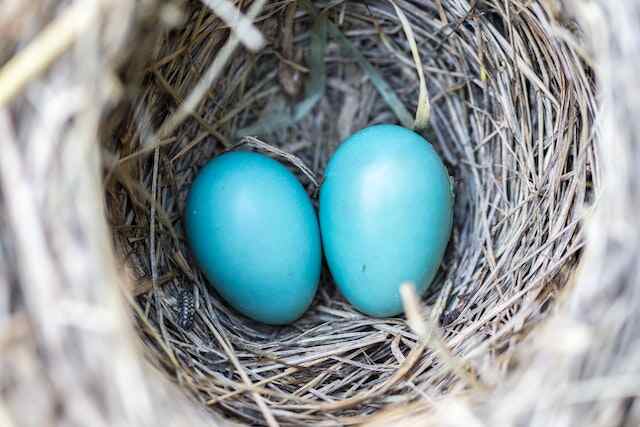
Potential Harm to Birds
Touching or disturbing bird nests can have severe consequences for the birds living in them. Nesting birds have a delicate balance to maintain to ensure their survival and the survival of their offspring.
When a bird’s nest is tampered with, the birds may become stressed or abandon their nest entirely, leaving eggs or hatchlings vulnerable to predators or the elements. This can lead to a significant decline in the bird population, affecting the entire ecosystem.
Effects of Interfering with a Bird’s Nest
Additionally, interfering with a bird’s nest may cause structural damage that can affect the bird’s ability to incubate eggs, hatchlings’ ability to develop, or the birds’ ability to access food or shelter. The nest may become unstable, and the eggs or hatchlings may fall out and be injured or die.
It is essential to understand that birds invest considerable time and energy into building their nests and raising their young. Any disturbance to their habitat can cause long-term effects on their survival and the overall health of the ecosystem.
Legal Protection of Bird Nests
It is important to note that many bird species and their nests are protected under federal and state law. The Migratory Bird Treaty Act of 1918 makes it illegal to disturb or destroy any active bird nest, eggs, or young without a permit. This law applies to most native bird species that are not endangered or threatened.
State laws may provide additional protections for specific species of birds. For example, in California, it is illegal to take, possess, or harm the nests, eggs, or young of any bird species without a permit.
If you are unsure whether a bird nest on your property is protected, it is best to contact your local wildlife agency for guidance.
Risks for Humans
While touching a bird’s nest can have serious consequences for the birds, it can also pose risks for humans.
Some bird species may perceive humans as predators when they approach their nests, and they may become aggressive in response.
In some cases, birds have been known to attack humans who get too close to their nests, potentially causing injury.
In addition to physical harm, disturbing bird nests can also have legal consequences, as many bird species and their habitats are protected by law.
It is important to always respect wildlife and their habitats, and to avoid disturbing bird nests whenever possible. If you must approach a bird’s nest for any reason, be sure to do so with caution and from a safe distance.
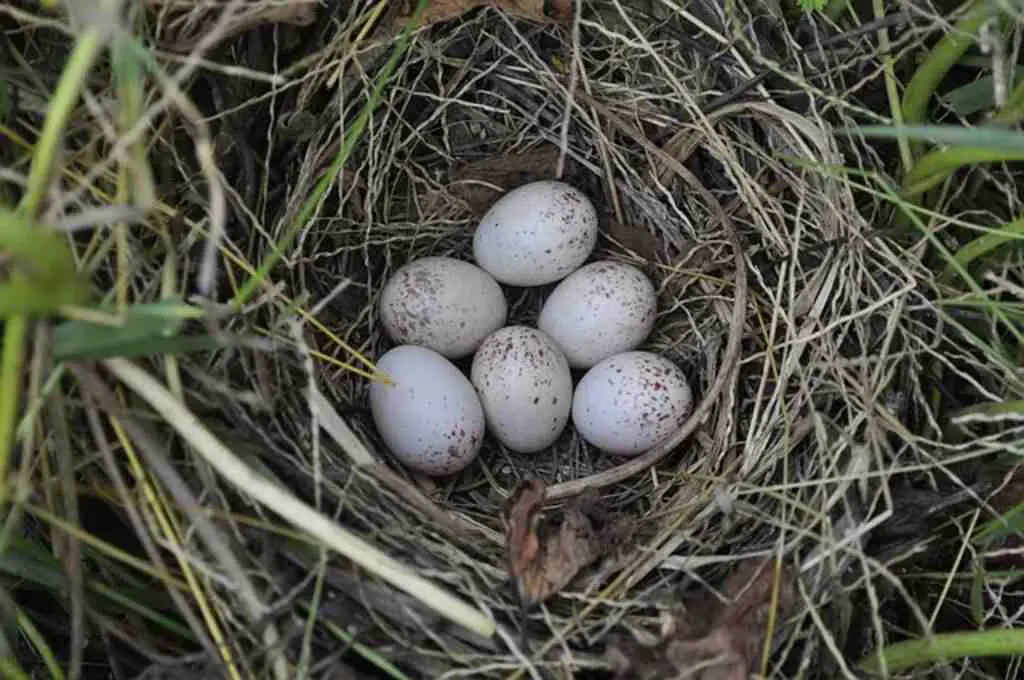
How to Protect Wildlife
Protecting wildlife is essential to maintaining the ecological balance of our planet. Here are some practical tips on how to protect birds and their nests:
- Respect bird nesting areas and avoid disturbing them
- Avoid taking or disturbing eggs or chicks from bird nests
- Keep pets under control and away from nesting areas
- Support bird conservation organizations and initiatives
- Reduce the use of pesticides in your garden to protect insects, which are a vital food source for birds
- Plant bird-friendly gardens with native plants that provide food and shelter for birds
- Teach children about the importance of bird conservation and the need to protect wildlife
By following these simple steps, we can all help to protect birds and their habitats from harm and ensure that future generations can continue to enjoy their beauty and wonder.
Teaching Children about Birds Nests
One of the best ways to inspire a love for bird conservation is to teach children about the importance of bird nests. By instilling a sense of wonder and respect for these natural structures, children can grow up to become responsible stewards of the environment.
Introducing Bird Nests to Children
When introducing bird nests to children, it’s important to emphasize their significance in the bird’s lifecycle. You can explain how nests are used for shelter, warmth, and protection of the eggs and chicks. Engage their curiosity by asking questions such as:
- What kind of birds build nests?
- What materials do birds use to build their nests?
- How long does it take for a bird to build its nest?
You can also show your children pictures of different types of bird nests and discuss the differences in design and structure. This can be a fun and educational activity that promotes learning and creativity.
Teaching Respect for Bird Nests
As you teach children about bird nests, it’s important to emphasize the importance of respecting these structures. Explain to them that bird nests are fragile and that disturbing them can harm the birds and affect their ability to reproduce. Encourage them to observe birds from a distance and to avoid touching or disturbing nests.
You can also teach children how to protect bird nests by creating a bird-friendly environment in your own backyard. This can include planting bird-friendly plants and providing nesting boxes for birds to use.
The Importance of Bird Conservation
Teaching children about bird nests is just one way to promote bird conservation. By fostering a love for birds and their habitats, we can work together to protect these vital ecosystems. Encourage your children to participate in bird conservation initiatives in your community, such as bird counts or habitat restoration projects. With our collective efforts, we can ensure a future where birds and their nests thrive.
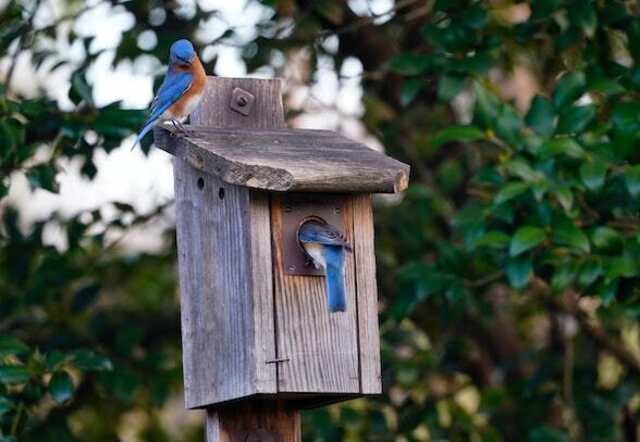
Positive Actions for Bird Conservation
There are many positive actions that individuals can take to support bird conservation and protect bird habitats. Here are some practical tips:
- Plant native plants: Native plants provide food and shelter for birds and other wildlife. Consider planting native plants in your yard or community to help create a habitat for local bird species.
- Reduce pesticide use: Pesticides can harm birds and their food sources. Consider reducing or eliminating the use of pesticides around your home and in your garden.
- Support bird-friendly businesses: Look for businesses that support bird conservation efforts, such as those that use sustainable practices and products.
- Volunteer for bird conservation: Many organizations, such as the Audubon Society, offer volunteer opportunities for bird conservation projects. Consider volunteering your time to help protect bird habitats and educate others about bird conservation.
- Reduce plastic use: Plastic pollution is a significant threat to wildlife, including birds. Reduce your plastic use by using reusable bags, water bottles, and other containers.
- Support bird conservation initiatives: Consider making a donation to support bird conservation efforts and organizations. You can also help by spreading the word about bird conservation and the importance of protecting bird habitats.
By taking these positive actions, individuals can make a difference in protecting bird habitats and species. Every effort counts in promoting bird conservation and preserving these beautiful creatures for future generations.
Conclusion
Touching a bird’s nest can have serious consequences for the birds and for humans. It is important to understand the nesting behavior and protection instincts of birds and to leave their nests undisturbed. Interfering with a bird’s nest can cause potential harm to the birds and may also result in legal implications for humans.
Protecting wildlife and preserving habitats is essential for bird conservation. By following simple steps, such as keeping a safe distance from bird nests and educating children on the importance of bird conservation, we can help protect these vital creatures. Initiatives like promoting bird habitat preservation and participating in bird conservation programs can also make a positive impact.
Respect and Protect Bird Nests
Remember, birds play a vital role in our ecosystem, and their nests are a crucial part of their survival. By respecting and protecting bird nests, we can ensure the continued existence of these majestic creatures for generations to come.
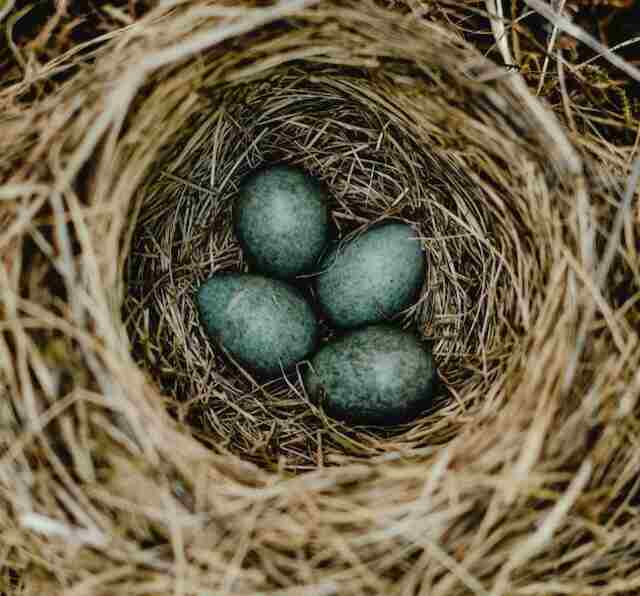
FAQs: What Happens If You Touch A Birds Nest?
What are the potential consequences of touching a bird’s nest?
Touching a bird’s nest can have harmful consequences for both the birds and yourself. It can cause stress and disturbance to the nesting birds, potentially leading to the abandonment of the nest or neglect of the eggs or chicks. Additionally, some bird species may exhibit aggressive behavior or defensive actions to protect their nests.
Why should I avoid touching a bird’s nest?
It is important to avoid touching a bird’s nest to ensure the well-being and survival of the birds. By leaving the nest undisturbed, you allow the parents to properly care for their young and increase the chances of successful fledging. Additionally, respecting bird nests helps maintain the balance of ecosystems and supports bird conservation efforts.
What can happen if I disturb a bird’s nest?
Disturbing a bird’s nest can have negative implications. The nesting birds may become stressed or abandon the nest altogether. This can result in the loss of eggs or chicks and disrupt the natural nesting cycle. It is important to be mindful of the potential risks and avoid disturbing bird nests to minimize any negative effects on bird populations.
What are the potential risks associated with touching a bird’s nest?
Touching a bird’s nest can pose risks for both humans and the birds. Some bird species may display defensive behaviors, such as swooping or pecking, to protect their nests. This can lead to injuries or accidents. Additionally, interfering with a bird’s nest can result in legal implications, as many bird species and their nests are protected by law.
How are bird nests legally protected?
Bird nests and their associated bird species are often protected by laws and regulations. It is illegal in many jurisdictions to intentionally disturb, damage, or destroy bird nests, eggs, or chicks. Violations of these laws can result in fines or other legal consequences. It is important to be aware of and respect these legal protections to ensure the conservation of bird populations.
What are the risks for humans if they touch a bird’s nest?
There are potential risks for humans if they touch a bird’s nest. Some bird species may perceive human interference as a threat and exhibit defensive behaviors. This can include swooping, pecking, or scratching. It is important to give bird nests their space to avoid any potential harm or injuries.
How can I protect wildlife, including bird nests?
To protect bird nests and wildlife in general, it is important to follow a few guidelines. Avoid touching or disturbing bird nests, observe from a distance, and refrain from taking or removing anything from the nest. Keep pets leashed and away from nesting areas. Encourage others to respect bird nests and educate them on the importance of wildlife conservation.
Why is it important to teach children about bird nests?
Educating children about bird nests is crucial in fostering a love for nature and wildlife conservation. By teaching children about the importance of bird nests, we can instill values of respecting and protecting wildlife from a young age. Children can learn about the nesting behaviors and lifecycles of birds, promoting empathy and a sense of responsibility towards the natural world.
What positive actions can I take for bird conservation?
There are several positive actions individuals can take to support bird conservation and protect bird habitats. Plant native vegetation to attract birds, provide nest boxes or bird feeders, reduce pesticide use, and participate in citizen science programs to monitor bird populations. Supporting local conservation organizations and advocating for bird habitat preservation are also impactful actions.
What is the importance of respecting bird nests?
Respecting bird nests is essential for the well-being of birds and the preservation of their populations. By leaving nests undisturbed, we allow birds to successfully raise their young and contribute to the balance of ecosystems. Respecting bird nests also supports the broader goals of wildlife conservation and the protection of biodiversity.

